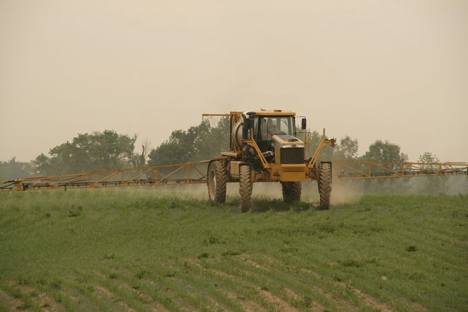
By Jeff Nield
I wrote earlier about the Environmental Working Group's (EWG) updated Dirty Dozen list of most toxic produce from a consumer perspective. Shortly after the list was announced, Tom Philpott, now at Mother Jones asked, "What about the farm workers?" Turns out that the cleanest produce from a consumer perspective – the "Clean Fifteen" – are at least as toxic as the "Dirty Dozen".
Taking off on Philpott's question, Karl Tupper at Ground Truth put the exposure differential between farm workers and consumers in perspective.
It's the farmers, farmworkers and residents of rural communities who are really most at risk from pesticides, not consumers. While these folks are exposed to pesticides from food like the rest of us, they also must contend with pesticide fumes drifting out of fields, exposure from working directly with pesticides, and pesticide-coated dust and dirt tracked into their homes from the fields.
He crunched some numbers to illustrate this point and his conclusions are alarming.
I looked up the total amount of pesticides applied in California in 2009 to each of the Dirty Dozen and Clean Fifteen items and also the total number of acres planted for each, and calculated pesticide use intensity for each. (I used California data since its the only data available, and since pineapples, mangoes, and blueberries aren't grown in California I had to omit these). Here's what I found:
The cleanest crop from a producer's standpoint is actually spinach, with only 0.4 lbs of pesticide used per acre in California. Spinach is fifth on the Dirty Dozen list.
Conversely, the crops with most intensive pesticide use are sweet potatoes and mushrooms, with 110.3 lbs/acre and 106.1 lbs/acre, respectively. These are Clean Fifteen commodities.
Overall, the two lists don't look that different from the standpoint of pesticide use. The average pesticide use intensity for the list are quite similar: 26.2 lbs/acre for the Clean Fifteen and 29.8 lbs/acre for the Diry Dozen.
Tupper points to fumigants, which are applied to the soil before crops are planted, as one of the major problems for farm workers since these chemicals are "very drift-prone and very toxic, and they are applied at very high rates compared to non-fumigant pesticides." Philpott addresses this in his post, explaining the emergence of less-persistent agro-chemicals in the wake of the public outcry sparked by Rachel Carson's Silent Spring in the 60's.
The agrichemical industry's response–embraced by farm owners, government regulators, and global aid institutions–was to promote pesticides that break down rapidly. But these alternatives, known as "non-persistent" chemicals, are much more dangerous at the time of application. That is to say, they're much safer for consumers, and much more dangerous for farm workers.
Article courtesy of treehugger.com

